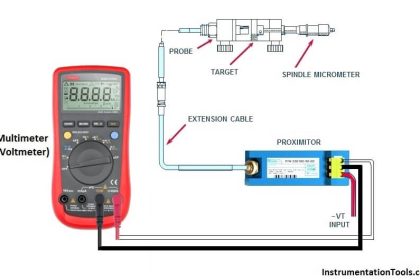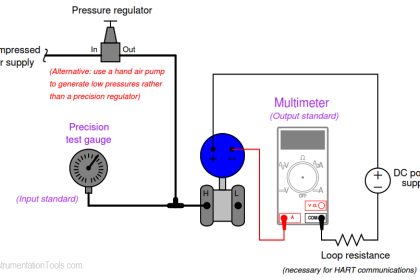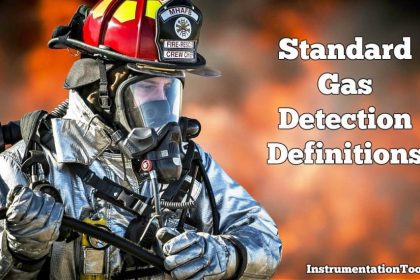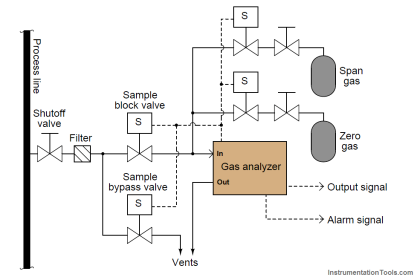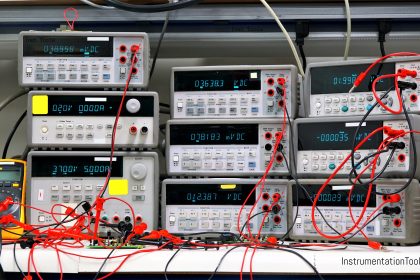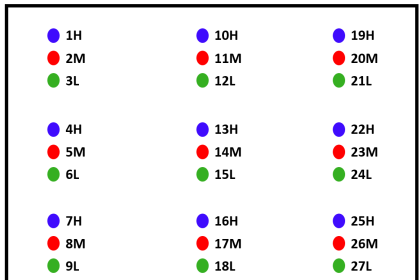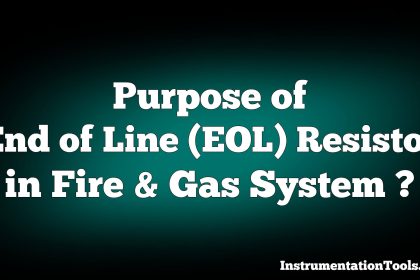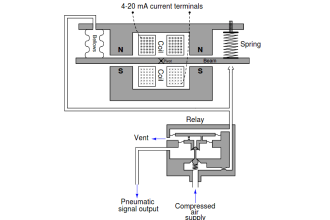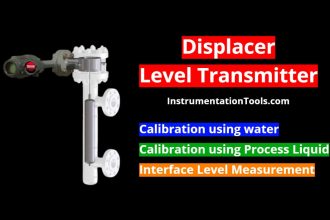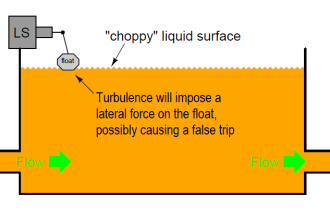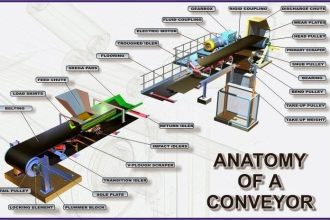The latest version of the International Safety Equipment Association (ISEA) statement applies to all types of direct reading portable gas detectors, not just confined space instruments. The ISEA protocol has been widely adopted by the gas detection equipment manufacturing community, even by manufacturers who are not members of the Association.
The ISEA protocol begins by clarifying the differences between a “bump test”, a “calibration check” and a “full calibration”:
A “bump test” (function check) is defined as a qualitative check in which the sensors are exposed to challenge gas for a time and at a concentration to activate all of the alarms to at least the lower alarm settings. It is important to understand what a qualitative test of this kind does not do. The test confirms that the gas is capable of reaching the sensors, that when they are exposed to gas the sensors respond, the response time (time to alarm) after gas is applied is within normal limits, and that the alarms are activated and function properly. However, a qualitative function test does not verify the accuracy of the readings or output of the sensors when exposed to gas.
A “calibration check” is a quantitative test using a traceable source of known concentration test gas to verify that the response of the sensors is within the manufacturer’s acceptable limits. For instance, a manufacturer might specify that readings in a properly calibrated instrument should be within ±10% of the value of the gas applied. If this is the pass / fail criterion, when 20 ppm H2S is applied to the instrument, the readings must stabilize between 18 ppm and 22 ppm in order to pass the test. It should be stressed that these pass / fail criteria are manufacturer guidelines. Different manufacturers are free to publish different requirements.
A “full calibration” is defined as the adjustment of an instrument’s response to match a desired value compared to a known traceable concentration of test gas. Once again, the calibration procedure, including the concentration of gas applied, method used to apply gas, and method used to adjust the readings are determined by the manufacturer.
The statement goes on to recommend the frequency for validation of the instrument’s operability:
A “bump test” (functional test) or “calibration check” of direct reading portable gas monitors should be made before each day’s use in accordance with the manufacturer’s instructions using an appropriate test gas.
Any instrument that fails the test must be adjusted by means of a “full calibration” procedure before further use, or taken out of service. If environmental conditions that could affect instrument performance are suspected to be present, such as sensor poisons, then verification of calibration should be made on a more frequent basis.
A “full calibration” should be conducted as required by the manufacturer. However, as discussed above, a “full calibration” should be conducted whenever testing indicates that adjustment is required. Even if the instrument is not yet “due” for a “full calibration”, if the instrument fails a “bump test” or “calibration check” it must be calibration adjusted before further use.
According to the ISEA Protocol, even daily testing may sometimes not be enough
Certain conditions and events have the potential to adversely effect the performance of the sensors and/or the entire instrument. Sometimes the damage and effect on performance is immediate. Sometimes the underlying damage is chronic in nature, and occurs over time. However, when the instrument stops working properly, it can happen very quickly.
The ISEA Protocol provides a list of conditions that can adversely affect the sensors and trigger a need for more frequent validation:
- Chronic exposures to, and use in, extreme environmental conditions, such as high/low temperature and humidity, and high levels of airborne particulates.
- Exposure to high (over range) concentrations of the target gases and vapors.
iii. Chronic or acute exposure of catalytic hot-bead LEL sensors to poisons and inhibitors.
- Chronic or acute exposure of electrochemical toxic gas sensors to solvent vapors and highly corrosive gases.
- Harsh storage and operating conditions, such as when a portable gas monitor is dropped onto a hard surface or submerged in liquid. Normal handling/jostling of the monitors can create enough vibration or shock over time to affect electronic components and circuitry.
- Change in custody of the monitor.
vii. Change in work conditions that might have an adverse effect on sensors.
viii. Any other conditions that would potentially affect the performance of the monitor
Bump Testing
A bump test, also known as a functional test, should be performed at the start of each day’s use. This procedure tests the alarms and sensors of a gas detector to be sure they are functional. The test exposes the detector to a known concentration of gases that exceed the lowest alarm set-point for each sensor. The bump test verifies sensor and alarm functionality, but not the accuracy of the instrument (you must rely on calibration for accuracy). To determine which calibration gases are appropriate for your instrument, consult the manufacturer’s instructional manual.
If an instrument fails a bump test, it should immediately go through a complete calibration before being put into use. Although a new gas detector most often is calibrated when sent from the manufacturer, it will still require bump testing/calibrating before it is first put into service to ensure it has not been damaged in shipment. Consult the manufacturer’s instructional manual to determine which process the manufacturer suggests.
Calibration
Calibration is defined by OSHA Bulletin SHIB 05-04-2004 as “an instrument’s measuring accuracy relative to a known concentration of gas. Gas detectors measure the concentration of a gas in an air sample by comparing the sensor’s response to the response generated by a calibration gas of a known concentration. The instrument’s response to the calibration gas serves as the measurement scale or reference point.” As a result of this sensor response, the Bulletin emphasizes the need to calibrate the instrument in the same environmental conditions as the monitor will be used in to help ensure accurate gas concentration readings.
An instrument’s sensors will degrade over time and repeated use. The calibration process allows the instrument the opportunity to self-correct so that it will accurately reflect the level of sensor sensitivity. Once a sensor is no longer able to accurately read concentration values, it has reached the end of its service life and will need to be replaced in order for the instrument to pass calibration. Also, any time the detector is dropped or damaged it should be recalibrated.
Types :
There are two methods of verifying instrument accuracy: a functional or bump test and a full calibration, each appropriate under certain conditions. A bump test verifies calibration by exposing the instrument to a known concentration of test gas. The instrument reading is compared to the actual quantity of gas present (as indicated on the cylinder). If the instrument’s response is within an acceptable tolerance range of the actual concentration, then its calibration is verified. (Note: It is recommended that users check with the detection equipment manufacturer for the acceptable tolerance ranges.) Instruments should be “zeroed” before the bump test in order to give a more accurate picture of the bump test results. When performing a bump test, the test gas concentration should be high enough to trigger the instrument alarm.
If the bump test results are not within the acceptable range, a full calibration must be performed. A full calibration is the adjustment of the instrument’s reading to coincide with a known concentration (generally a certified standard) of test gas. For verification of accuracy, calibration gas should always be certified by and traceable to the National Institute of Standards and Technology (NIST). In most cases, a full calibration is only necessary when an instrument fails a bump test or after it has been serviced. The full calibration and bump test should be conducted in a clean fresh air environment.
When to Bump Test and When to Calibrate ?
In the past, there often has been confusion regarding proper calibration procedures and frequency. To clarify this issue, the International Safety Equipment Association (ISEA) issued a position statement on instrument calibration that states, “A bump test or full calibration of direct-reading portable gas monitors should be made before each day’s use in accordance with manufacturer’s instructions, using an appropriate test gas.” If the instrument fails a bump test, it must be adjusted through a full calibration before it is used.
ISEA recommends more frequent testing if environmental conditions that could affect instrument performance are suspected, such as sensor poisons. The ISEA allows for less frequent calibration verification under certain conditions (see below), but the interval between testing should never exceed 30 days.
According to the ISEA, less frequent verification may be appropriate if the following criteria are met:
▪During a period of initial use of at least 10 days in the intended atmosphere, calibration is verified daily to ensure there is nothing in the atmosphere to poison the sensor(s). The period of initial use must be of sufficient duration to ensure that the sensors are exposed to all conditions that might adversely affect the sensors.
▪ If the tests demonstrate that no adjustments are necessary, the interval between checks may be lengthened, but it should not exceed 30 days.
▪ When calibrating an instrument, always follow the instrument user’s manual for the manufacturer’s recommended calibration frequency and procedure.
Important Definitions :
Bump Test . Gas Detection instruments are potentially life-saving devices. The only way to verify proper sensor and alarm operation is to perform a bump test. Bump testing is the process of briefly exposing the installed sensors to an expected concentration of calibration gas that is greater than the low alarm set point. Also referred to as a “functional test”, the bump test checks for sensor and alarm functionality but does not measure sensor accuracy and no adjustments are made to the instrument during a bump test.
Zero. Zeroing sets each installed sensor to recognize the ambient air as clean air. If the ambient air is not truly clean air, any gasses that are present and relevant to the installed sensor type will be measured and displayed as zero. Readings will be inaccurate until the unit is correctly zeroed in truly fresh air or with a zero air cylinder.
Calibration. All sensors gradually degrade over time. Without regular calibrations, sensor readings during instrument use will not accurately display true gas concentrations. During the calibration process, the instrument self-adjusts so that the sensors retain their ability to correctly measure and accurately display gas concentration values. When a sensor has degraded beyond an acceptable level, it has reached its end of life and will no longer pass a calibration.
Peak Readings. The instrument stores the highest detected gas reading, the “peak reading” or “peak”. Bump testing and calibration will often register new peak readings. Therefore, the clearing of the peak reading should follow each calibration. The instrument operator may also wish to clear the peak reading after a bump test, before a change in location, or after an alarm is addressed and cleared.
